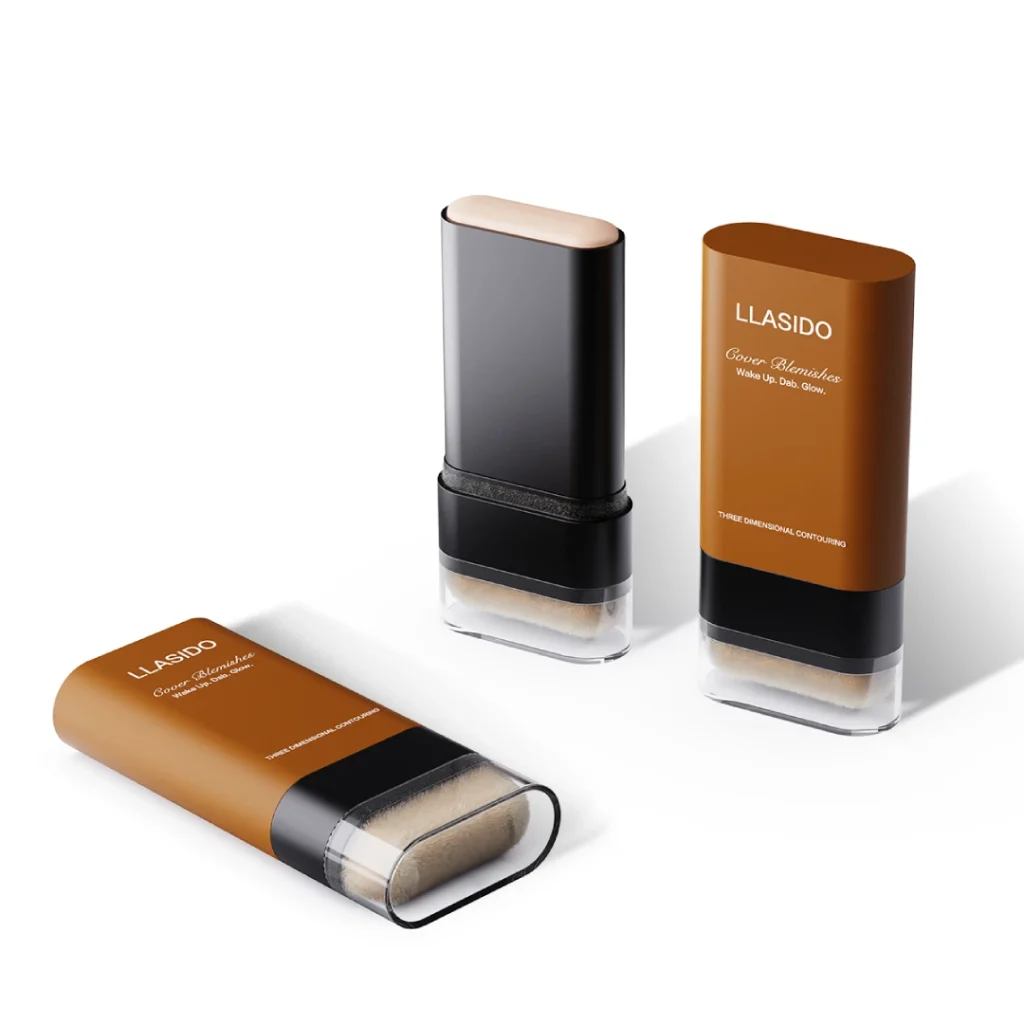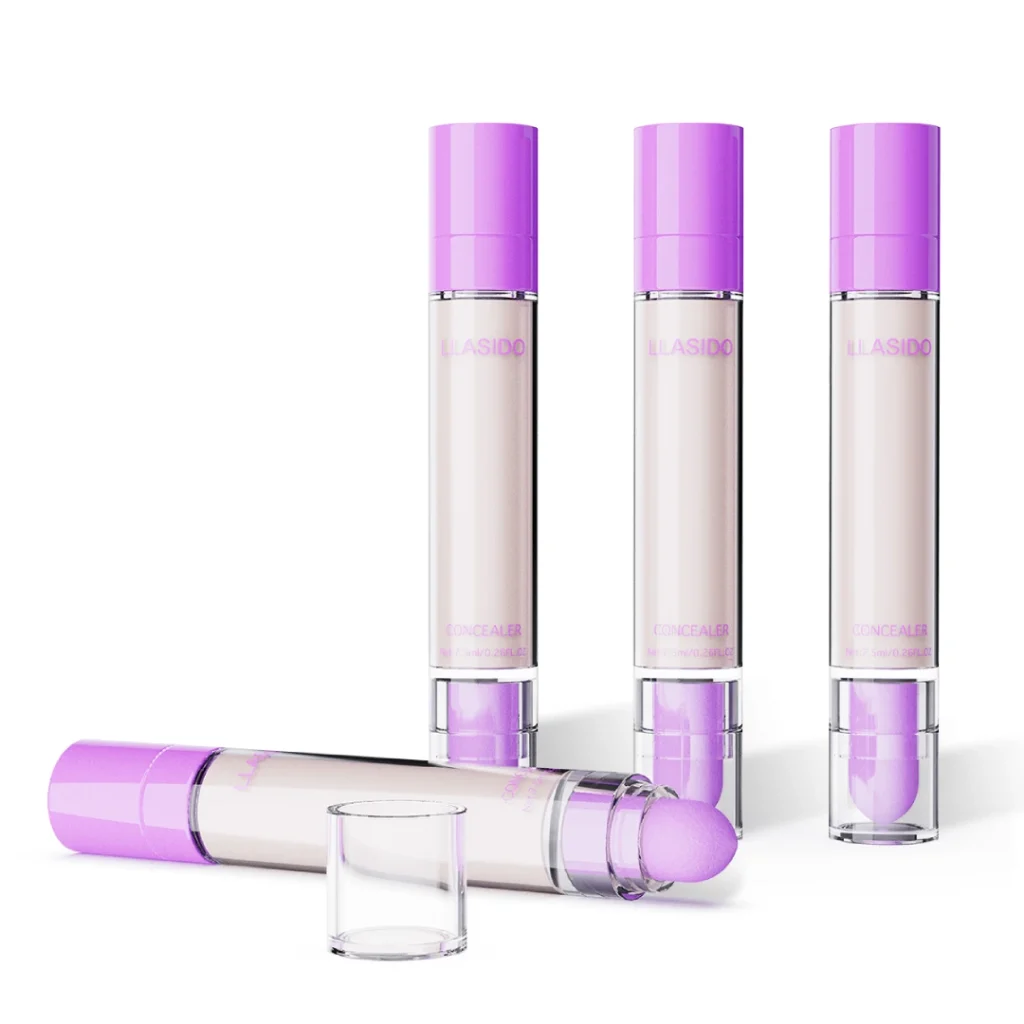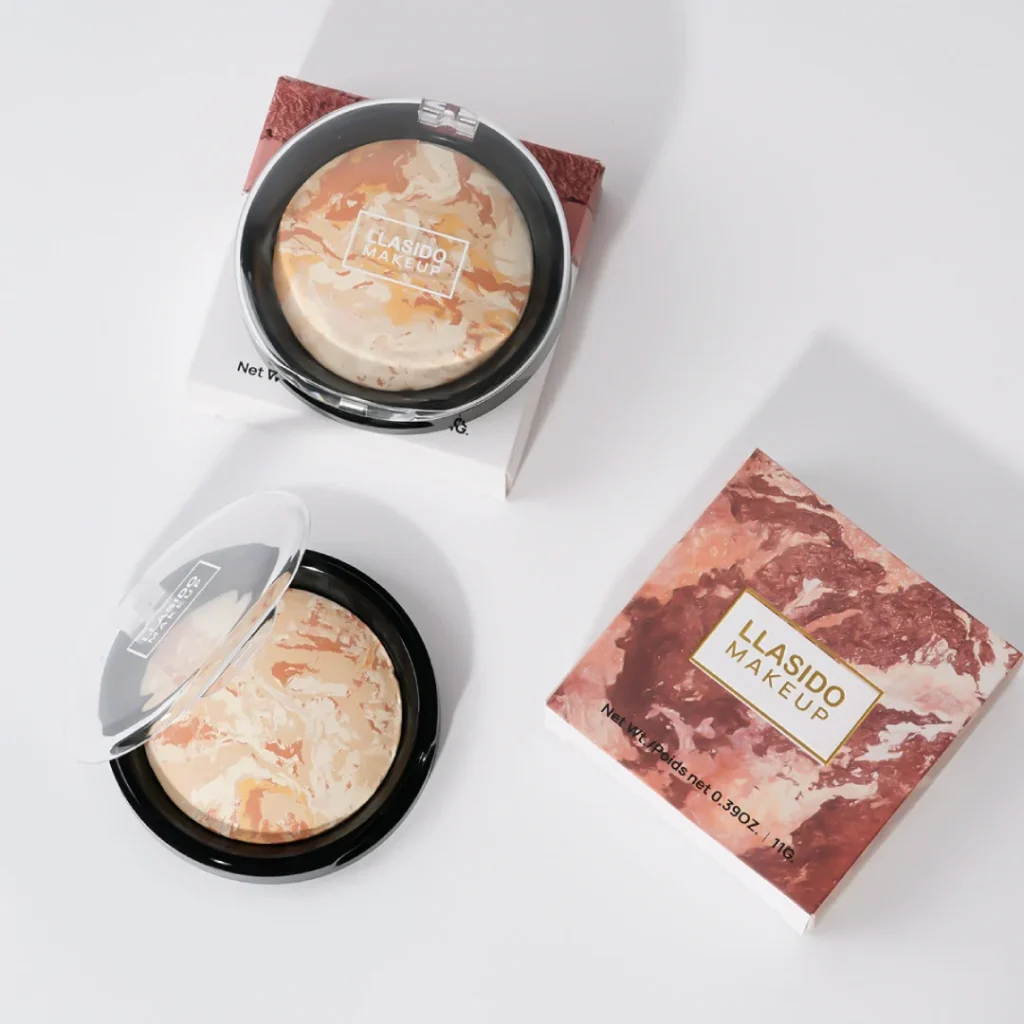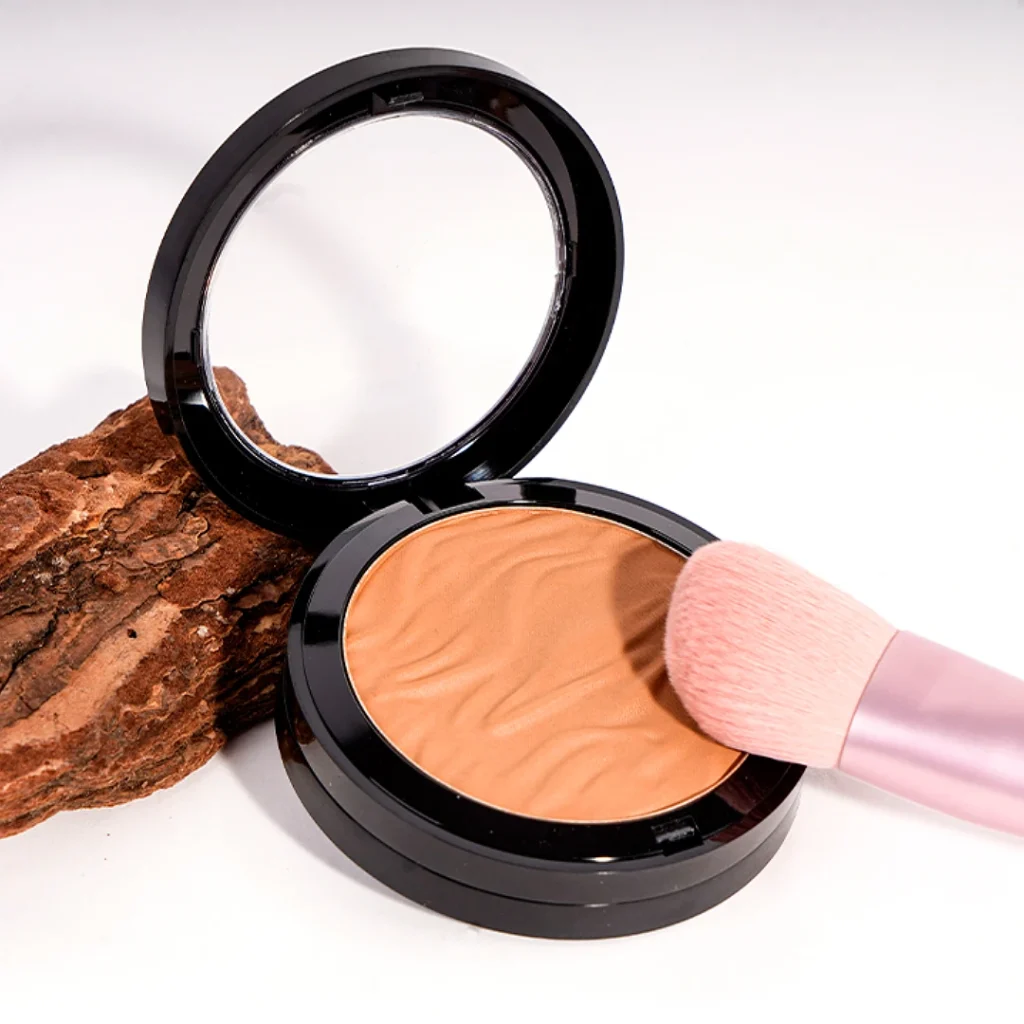Makeup styles are more than surface beauty—they act as a mirror of identity, culture, and emotion. Each era and community uses makeup differently, shaping how people express themselves.
How makeup styles express personality and culture
A makeup style can tell a story before words are spoken. A minimalist look might reveal a calm, practical nature, while bold eyeliner or red lips might show confidence and creativity. These small choices act like visual cues about who we are or how we wish to be seen.
Across cultures, makeup takes on deeper meaning. In Japan, for example, geisha makeup with white faces and red lips symbolized discipline and grace. Meanwhile, in modern America, colorful eye shadow palettes often signal freedom of expression. Every culture leaves its mark through unique techniques and shades, shaping what “beauty” means within its society.
The evolution of makeup trends over time
Makeup styles evolve just as languages or music do. In the 1920s, smoky eyes and thin brows reflected rebellion and the jazz age spirit. By the 1960s, the look shifted to graphic eyeliner and pale lips, inspired by pop art and youth culture. In today’s digital world, trends spread globally overnight through social media, blending traditions and innovations.
Yet, change often cycles back. Retro styles like the soft matte skin of the 1990s or the winged eyeliner of the 1950s keep returning. This pattern shows that makeup is never static—it adapts to technology, fashion, and social movements, reflecting how society redefines beauty again and again.
Why different makeup styles suit different occasions
Just like clothing, a makeup style fits its setting. A glowing natural look works for school or work because it appears light and fresh under daylight. In contrast, dramatic contouring and shimmer suit evening events where artificial lighting changes how features appear.
Professional makeup artists often plan looks based on lighting, duration, and theme. For example, television makeup requires stronger pigments to avoid washing out on camera. Understanding when and why to use each style helps balance self-expression with practicality—showing that makeup is both an art form and a science.
Natural Makeup Style — The Effortlessly Fresh Look
The natural makeup style focuses on creating the illusion of bare, healthy skin while still offering polish and balance. It’s often called the “no-makeup makeup look.” This style enhances natural features through soft tones and lightweight formulas that keep the face fresh and breathable.
Key features of natural makeup
A natural makeup style uses sheer foundations, nude lip shades, and soft blush tones to mimic the skin’s natural color. The goal isn’t to hide imperfections but to even out texture and tone. Most artists focus on glowing skin, defined brows, and a touch of mascara for balance.
This look also avoids harsh lines or heavy pigments. Instead, it relies on blending and light-reflecting formulas. The result feels comfortable, like a second skin. Many people choose this style because it adapts easily to daily life—from school to work—without drawing too much attention.
Ideal products and techniques for subtle definition
To achieve this makeup style, moisturizing and priming the skin is key. A tinted moisturizer or BB cream can even out tone without masking the complexion. Cream blush or bronzer adds warmth, and brow gel helps frame the face naturally.
The technique relies heavily on blending. Brushes and damp sponges help diffuse color and maintain a seamless transition between products. Highlighter can be used sparingly on cheekbones or the bridge of the nose to mimic natural radiance rather than shimmer.
When to choose the natural look
The natural makeup style suits almost every setting. It’s ideal for daily wear, job interviews, or outdoor events where strong lighting might emphasize heavy makeup. It’s also a great base for beginners who want to learn facial structure and product control.
However, this look isn’t about doing less—it’s about making smart, minimal choices. Many professionals also use natural makeup as a foundation for other styles, adding bold lips or liner when the occasion calls for something more striking.
Glam Makeup Style — Bold and Camera-Ready
The glam makeup style is all about drama, precision, and radiance. It’s designed to catch the light, define every feature, and photograph beautifully. This look combines skillful contouring, shimmering highlights, and bold pigments to create a polished, red-carpet-ready finish.
Distinctive traits of glamorous makeup
Glam makeup stands out through contrast and intensity. Think full-coverage foundation, sculpted cheekbones, and defined eyes. The colors are richer, the finishes more reflective, and every detail—lashes, brows, lips—plays a part in the overall harmony.
Unlike natural makeup, this style embraces precision. Eyeliner wings are sharp, and contour lines are purposeful. The focus is on enhancing symmetry and structure so the face looks striking both in person and on camera. Many makeup artists view this as performance-level artistry.
Balancing shimmer, contour, and bold colors
The secret to good glam isn’t just more makeup—it’s balance. Too much shimmer can flatten the face, while excessive contour can look harsh under bright lighting. Successful glam makeup uses highlight and shadow in measured layers.
For example, metallic eyeshadow may pair with matte lips, or bold lipstick might contrast with soft, luminous skin. The combination depends on the setting—whether it’s evening lighting, stage performance, or professional photography. Each element should enhance, not compete.
Occasions that call for a glam transformation
Glam makeup fits occasions where confidence and presence matter: weddings, prom nights, formal parties, or stage performances. It’s often chosen for moments captured in photos or under bright lights, where subtle makeup might fade away.
Still, glam makeup isn’t limited to celebrities. Many people enjoy creating a glam look simply for fun—an act of self-expression or artistic challenge. It’s a reminder that makeup isn’t just for blending in; sometimes, it’s for standing out with intention.
>> Choosing the Right Makeup for Your Skin: Flawless Application
Classic Makeup Style — Timeless and Elegant
The classic makeup style has survived decades of changing trends because it relies on balance, structure, and universal appeal. It emphasizes clean lines, neutral tones, and symmetry, creating a refined look that works across eras and occasions. Think of it as the little black dress of makeup — always appropriate, always graceful.
Signature elements of a classic look
A classic makeup style starts with smooth, even-toned skin. Foundation is applied lightly but with precision to create a flawless base. Eyes are softly defined with neutral shades like taupe, beige, or brown — colors that bring depth without overpowering the natural shape.
Brows frame the face but remain structured and natural. Mascara and eyeliner add definition, while blush gives subtle warmth to the cheeks. The goal is harmony — no single element should dominate the rest. This approach creates a sense of quiet confidence rather than loud glamour.
Red lips, winged eyeliner, and perfect balance
Few things represent the classic style more than a red lip and winged eyeliner. This combination recalls the elegance of icons like Audrey Hepburn and Marilyn Monroe. The red lip adds focus and strength, while the eyeliner provides sharpness and control.
Yet balance is key. If the lips are bold, the eyes remain soft; if the eyes are heavily lined, the lipstick shifts toward muted shades. The precision of the wing and the vibrancy of the lip require steady hands and an eye for proportion — a true study in restraint and artistry.
How to adapt classic makeup for modern wear
Modern classic makeup often simplifies the process while keeping its core appeal. Lightweight foundations replace heavy powders, and matte lipsticks may be swapped for satin finishes for a fresher texture.
The key lies in adjusting the intensity. A daytime version might feature softer eyeliner and sheer red lips, while an evening variation revives full pigment and sharper wings. This adaptability makes the classic style timeless — it evolves without losing its essence, reminding us that elegance never truly goes out of style.
Romantic Makeup Style — Soft and Feminine
Romantic makeup is all about creating a dreamy, gentle appearance that feels both emotional and effortless. It focuses on warmth, softness, and glow — the kind of look that seems touched by natural light. With rosy tones and subtle textures, this style expresses tenderness without being overly sweet or dramatic.
Characteristics of romantic tones and textures
The romantic makeup style uses colors that mimic natural warmth — pinks, peaches, mauves, and soft browns. These tones flatter most skin types and give the face a calm, luminous quality. The texture often leans toward cream-based or dewy products that reflect light softly, creating a fresh and hydrated look.
A romantic style avoids sharp lines or harsh contrasts. Instead of defined contours, it relies on gentle blending and diffused edges. The skin appears radiant but never shiny; the finish is velvety and delicate, as if lit from within.
>> What is the correct order to put on makeup for beginners?
Using blush and soft eyeshadows effectively
Blush is central to this look — it brings life and emotion to the face. A light wash of pink or coral across the cheeks and nose can create that soft “after a walk in spring air” effect. For eyes, think watercolor tones: dusty rose, champagne, and lavender shades work beautifully when blended seamlessly.
Mascara and eyeliner are applied lightly, just enough to frame the eyes without breaking the softness. Cream or shimmer shadows can be used to catch light on the lids, giving the eyes a subtle sparkle that feels natural, not staged.
Perfect for dates, weddings, and gentle moods
Romantic makeup shines during intimate or emotional settings — weddings, date nights, or daytime gatherings. It suits moments that call for connection rather than attention. The goal is to enhance the person’s natural warmth and emotion, not to transform them completely.
For a wedding, soft pink lips paired with glowing skin can look timeless and elegant. For a casual afternoon, a tinted balm and a touch of shimmer may be all that’s needed. Romantic makeup, at its core, isn’t about perfection — it’s about feeling comfortable, confident, and beautifully human.
Dramatic Makeup Style — The Statement Maker
The dramatic makeup style is for those moments when subtlety takes a back seat. It’s expressive, powerful, and meant to stand out under bright lights or in evening settings. Every element—from the eyes to the lips—carries more depth and intensity, creating a strong visual statement that reflects confidence and artistry.
Defining features of dramatic makeup
A dramatic makeup look centers around contrast and precision. Think defined brows, sculpted cheekbones, and eyes that command attention. Colors tend to be richer—deep plums, charcoals, metallics, and reds that make features pop. Unlike the natural style, this approach intentionally enhances structure and shadow.
Texture also plays a major role. Matte finishes emphasize sharpness, while shimmer and gloss are used strategically to catch light. The goal is harmony, not chaos—each bold element should complement, not compete. In skilled hands, dramatic makeup feels powerful but controlled, like a visual symphony.
Smokey eyes and sharp contouring explained
The smokey eye is the heart of dramatic makeup. It’s built through layers—starting with a dark base, blended upward into softer tones. The technique relies on diffusion rather than harsh lines, creating a gradient effect that adds mystery and depth. Dark shades like black, gray, and espresso remain staples, though jewel tones can modernize the look.
Sharp contouring follows the same philosophy of contrast. By emphasizing shadows and highlights, the face gains definition and strength. A sculpted jawline, lifted cheekbones, and a brightened under-eye area create a photo-ready effect. However, mastering blending is key—poor blending can quickly turn bold into blotchy.
When to embrace boldness without overdoing it
Dramatic makeup thrives in evening events, stage performances, or fashion-forward settings. It’s perfect for situations that call for visual impact—parties, photoshoots, or formal nights. Yet, it’s easy to cross the line between bold and excessive.
The trick lies in balance. If the eyes are heavily defined, keep lips understated; if lips are dark and glossy, tone down the eyes. Dramatic makeup is not about piling on products but about creating deliberate emphasis. As many artists say, it’s not makeup that’s loud—it’s the story you tell with it.
Artistic Makeup Style — Expressing Creativity
Artistic makeup breaks the boundaries of traditional beauty. It transforms the face into a living canvas, where colors, shapes, and textures replace the rules of symmetry and restraint. This makeup style celebrates individuality and imagination, often inspired by fantasy, fashion, or even emotion itself.
Exploring color, texture, and abstract design
Artistic makeup thrives on experimentation. Instead of sticking to neutral tones or blending for realism, it invites bold contrasts—vivid blues, metallic silvers, neon lines, or geometric shapes. The face becomes a composition of movement and energy, much like a painter’s brushstroke on canvas.
Texture is equally important. Glitter, gloss, matte pigments, and even unconventional materials like gems or foil are often used to add depth. Some looks may mimic watercolor art, while others explore surreal or futuristic patterns. The aim is not perfection but expression—a reflection of how creativity feels in the moment.
Makeup as an art form beyond beauty standards
Traditional makeup often focuses on enhancing symmetry and meeting social beauty ideals. Artistic makeup challenges that idea. It’s not about looking “pretty” but about visual storytelling—turning feelings, moods, or ideas into color and shape.
Artists use it to express identity or make cultural statements. From avant-garde runway shows to conceptual photo shoots, makeup becomes a tool for dialogue. This shift redefines cosmetics from a beauty accessory to a legitimate medium of art, one as expressive as paint or clay.
The rise of creative makeup in social media culture
Social media has fueled a new wave of artistic makeup. Platforms like Instagram, TikTok, and YouTube allow creators to share bold, experimental looks with millions of viewers. Young artists now mix fashion, fantasy, and technology to craft viral designs that blur the line between art and self-expression.
What was once reserved for stage performers or editorial shoots is now part of everyday creativity. Whether it’s a galaxy-inspired eye look or hand-painted flowers across the cheeks, artistic makeup thrives in the digital age—where imagination, not perfection, gets the spotlight.
Retro Makeup Style — Inspired by the Past
Retro makeup celebrates decades of style evolution, capturing the spirit of each era through color, shape, and attitude. From the bold lips of the 1920s to the frosted shadows of the 1990s, every vintage look tells a story about beauty ideals and social change. It’s nostalgia with a brushstroke of artistry—timeless yet endlessly adaptable.
Iconic vintage trends from the 1920s to 1990s
The 1920s introduced short hair and daring lipstick—deep reds that reflected freedom after World War I. Thin, curved brows and smoky eyes completed the flapper aesthetic. By the 1950s, Hollywood glamour dominated: matte skin, sharp eyeliner wings, and the unforgettable red lip defined stars like Marilyn Monroe.
In the 1960s, eyes took center stage. Twiggy’s heavy lashes and white eyeliner transformed faces into mod icons. The 1980s flipped the script with color explosions—electric blues, blush overload, and glossy lips echoed the energy of pop culture. Finally, the 1990s brought minimalism: brown tones, sheer lips, and effortless cool ruled the decade.
Adapting retro makeup to today’s aesthetics
Modern artists often reinvent retro looks with a contemporary twist. Instead of copying the past, they mix eras—pairing a 1950s red lip with dewy 2020s skin, or combining 1960s graphic liner with a natural brow. This blend keeps vintage makeup alive while aligning it with today’s fresh, wearable approach.
Technology also refines execution. High-definition formulas and lightweight products allow retro-inspired looks to feel breathable and polished rather than costume-like. What was once theatrical now becomes subtle, nostalgic elegance for daily wear.
Understanding the influence of fashion and film
Fashion and film have always shaped makeup trends. Classic cinema introduced timeless beauty icons whose looks defined generations. The cat-eye of Audrey Hepburn, the shimmer of disco-era stars, or the grunge minimalism of ’90s models all emerged from cultural storytelling through the screen.
Runway trends also echo this influence. Designers frequently revisit old decades to evoke emotion—using makeup to match silhouettes, fabrics, and moods. Retro makeup isn’t just about copying history; it’s about reinterpreting it. Each revival reflects how beauty evolves while honoring the art that came before it.
Minimalist Makeup Style — Simple, Clean, and Modern
Minimalist makeup focuses on clarity and restraint, emphasizing the skin’s natural beauty rather than layering on heavy products. This style highlights simplicity, clean lines, and subtle enhancement.
Key principles of the minimalist approach
The minimalist makeup style relies on “less is more.” Key principles include light coverage, neutral tones, and precise application. Each product serves a clear purpose, avoiding unnecessary layering or complexity. The goal is to enhance features subtly without drawing attention to the makeup itself.
Blending is essential, as edges should appear seamless. Every choice, from eyebrow grooming to soft lip tint, is intentional yet understated. This approach prioritizes harmony and balance over bold statements, making it both versatile and wearable.
Skin-first beauty and natural enhancement
Minimalist makeup begins with healthy, hydrated skin. Lightweight foundations or tinted moisturizers even out tone without masking natural texture. A hint of blush or bronzer adds warmth, while brows and lashes are groomed softly to frame the face.
Highlighters or subtle shadows are used sparingly, only to lift features gently. The focus is on amplifying natural radiance rather than creating artificial effects. This makes minimalist makeup perfect for daily routines or situations where comfort and authenticity matter.
Why minimalism is trending in modern beauty
Minimalism aligns with lifestyle and environmental awareness trends. People seek efficiency, clean ingredients, and sustainable choices, favoring products that multitask or feel lightweight. Social media has also popularized “skin-first” aesthetics, highlighting natural beauty over heavy transformation.
This trend is versatile, appealing to professionals, students, and creatives alike. Minimalist makeup allows for self-expression without extensive effort, proving that simplicity can be as impactful and memorable as bold or dramatic styles.
Finding Your Signature Makeup Style
Finding your signature makeup style is about understanding your features, personality, and lifestyle. It’s the combination of looks that feels authentic and enhances your natural beauty. This process involves exploration, observation, and a bit of experimentation to see what works best for you.
How to match makeup styles to your features and lifestyle
Choosing a makeup style starts with your face shape, skin tone, and eye color. Certain styles, like dramatic or glam, may emphasize strong features, while natural or minimalist looks suit softer facial contours. Lifestyle also matters: busy schedules might favor quick, wearable looks, while social events allow for more intricate experimentation.
Matching your style to your routine ensures that makeup feels comfortable and intentional. A signature look should be sustainable, reflecting both personal expression and practical considerations like time, lighting, and social setting.
Experimenting safely with different aesthetics
Experimentation is key to discovering your signature style, but it should be done safely. Patch-testing new products can prevent irritation, and starting with small changes—like a different lip color or eyeshadow technique—helps gauge what feels right.
Practicing on weekends or during casual events allows creativity without risk. By exploring textures, tones, and finishes gradually, you can identify what resonates with your personality and avoid overloading your skin or routine.
The balance between personal comfort and expression
Ultimately, a signature makeup style balances self-expression with comfort. It should feel empowering rather than burdensome. Some may prefer bold, statement-making looks, while others thrive in subtle, natural tones.
The key is confidence: wearing makeup should enhance how you feel, not just how you look. Understanding your preferences, experimenting thoughtfully, and adapting to different occasions ensures your style is both authentic and practical—truly your own.
Conclusion
Understanding the 8 makeup styles helps you explore how color, texture, and technique express personality and culture. From natural and minimalist to dramatic or artistic, each style offers a unique way to enhance features, suit occasions, and reflect individuality, empowering you to find your signature look.
Frequently asked questions
What factors should I consider when choosing a makeup style?
When choosing a makeup style, consider your skin tone, face shape, lifestyle, and the occasion. Lighting, time of day, and personal comfort also influence which style will look natural, flattering, and sustainable.
Can I mix elements from different makeup styles?
Yes, combining features from multiple makeup styles can create a personalized look. For instance, pairing natural skin with dramatic eyes or adding artistic highlights to a classic base allows self-expression while staying balanced.
How do trends affect traditional makeup styles?
Trends often adapt traditional makeup styles to modern preferences. Classic, retro, or glam looks may be updated with contemporary colors, textures, or techniques, keeping them relevant while honoring the original aesthetics.
How long does it take to master each makeup style?
The time required varies by style and experience. Natural or minimalist looks may take just minutes, while dramatic or artistic styles require practice with layering, blending, and precision to achieve professional results.
Are certain makeup styles better for photos or videos?
Yes, some styles perform better under specific lighting. Dramatic and glam makeup is ideal for photography and stage settings, while minimalist or natural styles work well for everyday use and digital screens where subtlety is key.









